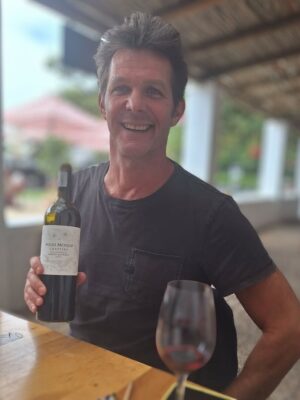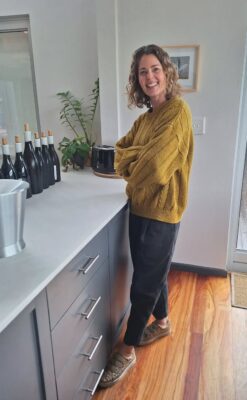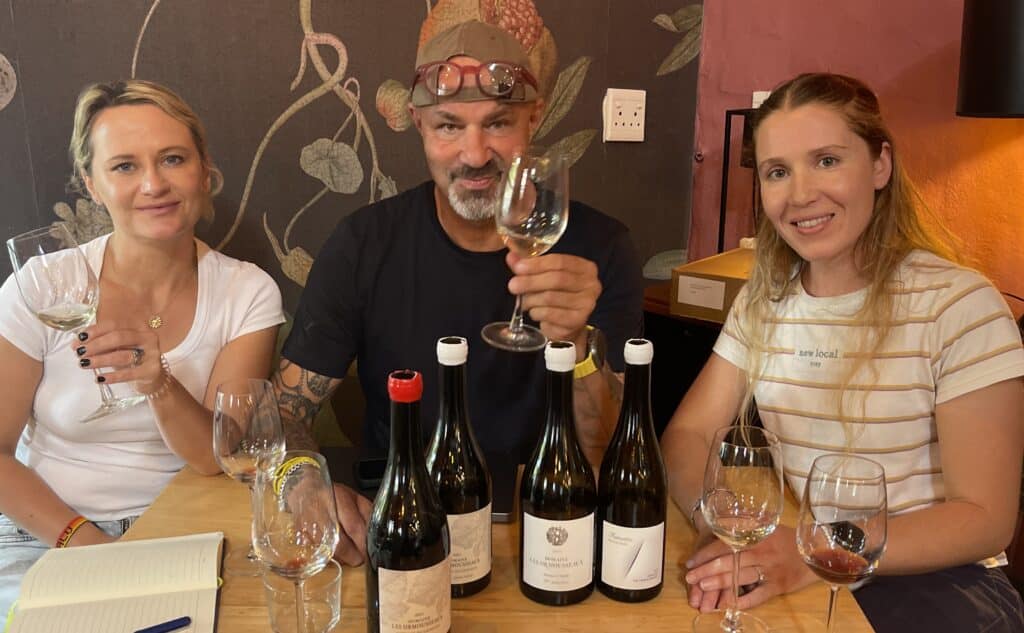Malu Lambert: Rethinking Sauvignon Blanc with site-driven winemaking
By Malu Lambert, 2 April 2025
Sometimes sauvignon will surprise you. At least it’s been surprising me. South African savvy is generally approached with New World methodology: protective winemaking, ester-enhancing yeasts, exaggerated thiols/pyrazines all in a bid to produce wines that are largely a caricature of the variety, showing up in full clown make-up.
As the second most planted grape in the country at over 10,000 hectares, shouldn’t we be seeing more thoughtful renditions alongside the commercial? I am happy to report that lately more and more sauvignons with a sense of place have been filling my glass.
It would be remiss not to mention Matt Day here of Klein Constantia, who has long been championing site-specific sauvignon, and doing a very good job at it, too. Though for this piece I was inspired by a series of fairly recent tastings.

Miles Mossop.
Let’s kick off with the Miles Mossop new-vintage release of Chapters; terroir-driven, single-varietal wines aptly celebrating storied vineyards. The Stellenbosch Sauvignon Blanc 2023 tasted more like a Pouilly-Fumé than a South African sauvignon. The grapes from a single block of bushvines, planted in 1986. The very same vineyard from which Mike Dobrovic of Mulderbosch sourced the fruit for his famous sauvignons. Grapes were wholebunch pressed, spontaneously fermented and matured in old oak. Stirring was employed, though malo blocked. All with the intention of ‘… expressing weight, texture, depth, which is what we get in abundance because of the nature of the old vines,’ explained Mossop.
“We’re not trying to build a wine with pyrazine, rather we’re focusing on all the other beautiful parts of sauvignon: cassis leaf, blackcurrant, tending towards the tropical with passion fruit; though essentially we’re not looking for primary fruit.” He says the site significantly informs the outcome with it being a relatively warm microclimate and aspect. Read a review here.
Not long ago I met with Angelo van Dyk of own-label Yo El Rey. Van Dyk’s ethos is to only work with organic fruit from carefully prospected sites, brought to bottle with low interventionist techniques. Just Kidding 2023 is from 20-year-old Tulbagh vines that saw natural fermentation and maturation in old oak, bottled unfiltered and unfined. The wine is defined by an electric spine of acidity.
Van Dyk reflected how he was inspired to go leftfield with sauvignon while working for an importer of wines from Austrian state Styria in London.
“At the time, I couldn’t stand sauvignon, but these wines quickly changed my mind,” says Van Dyk. “They were handled with a light touch, no additions, and were vivid and compelling. I couldn’t get enough of them. It made me realise that when you make sauvignon according to a ‘recipe’ they all kind of taste the same. Though if you respect the fruit and farming, and allow the wine to take its own shape, they can be very intriguing.”

Trizanne Barnard.
Sauvignon specialist Trizanne Barnard has also taken a swerve with the variety in the form of the Sondagskloof White from her Seascape range, hailing from a tiny ward of the same name just outside of Stanford. When writing about it for Micheal Fridjhon’s site Wine Wizard, I dubbed it ‘sauvignon blanc turned inside out’, so contrary to the usual protective process was Barnard’s winemaking, including warm and wild ferment on the skins, regular bâtonnage and maturation in new oak. Read a review here.
From oak to glass. Known sauvignon innovators Diemersdal produces eight different styles, which includes the skin-contact, spontaneous ferment Wild Horseshoe as well as the Winter Ferment, made from frozen juice. Their latest release, The Globe Sauvignon Blanc 2023 makes use of hermetically-sealed 220-litre ‘wine globes’ – inspired by a trip to famous Loire producer, Dagueneau. It’s a subtle wine, all delicacy and gentle mouthfeel. Read a review here.
It seems the globes are also all the rage in the Loire – Riandri Visser is also making use of them in her mix of maturation vessels for Domaine Les Ormousseaux. For the last couple of years Visser has split her time between France and Cape Point Vineyard, working the alternate harvests. She was previously at Pascal Jolivet with fiancé, Clement Jolivet (who incidentally also collaborated with Matt Day for the Metis Sauvignon). Les Ormousseaux is now the pair’s own project, which I briefly wrote about in a previous article entitled ‘South Africans prospecting international terroirs’, 2021 being the maiden vintage.

Now for the first time a pallet of Les Ormousseaux has arrived in Cape Town. I met with Visser at Foodbarn in Noordhoek to taste through the three sauvignons, and one red, a near-equal gamay and pinot blend.
“I don’t do green,” said Visser, shaking her head, referring to pyrazine-driven wines.
Here at home, Les Ormousseaux is available at Cape Point Vineyards as well as speciality wine shops and comprises: Pouilly-Fumé FUMETTE 2023, Coteaux du Giennois Blanc 2021, Pouilly-Fumé 2021 and Coteaux du Giennois Rouge 2021.
“We’re based in the southern part of the appellation Coteaux du Giennois, close to the border of Pouilly-Fumé,” explained Visser. “Our vineyards grow on a south-facing slope, ideally placed to benefit from sufficient sunshine to achieve maturation.
“While our Pouilly Fumé fruit is in Tracy-sur-Loire, next to the Loire River opposite Sancerre. We have two parcels, one named Les Froids and the other Le Champ de l’Abreu, planted in an old flint quarry where they removed around 1000 tonnes of silex.”
Visser’s whites convincingly make the case for sauvignon with a sense of place. As you taste through them, you can easily envision the flint soils, the slopes, the rivers, even the devastation by hail she describes. We taste the place; there are no ‘gooseberries’, ‘green peppers’ or gGd forbid, ‘cat’s pee’ – rather these wines transport the drinker, like all great wines should.
I argue that if a wine is easily identifiable by its varietal characteristics, then we aren’t in the realm of fine – like sauvignon is so often guilty of. It’s the same with music or art, we don’t necessarily have to understand it to be moved by it.
- Malu Lambert is a freelance wine journalist and wine judge who has written for numerous local and international titles. She is a WSET Diploma alum and won the title of Louis Roederer Emerging Wine Writer of the Year 2019, among many other accolades. She sits on various tasting panels and has judged in competitions abroad. Follow her on X: @MaluLambert








Comments
0 comment(s)
Please read our Comments Policy here.